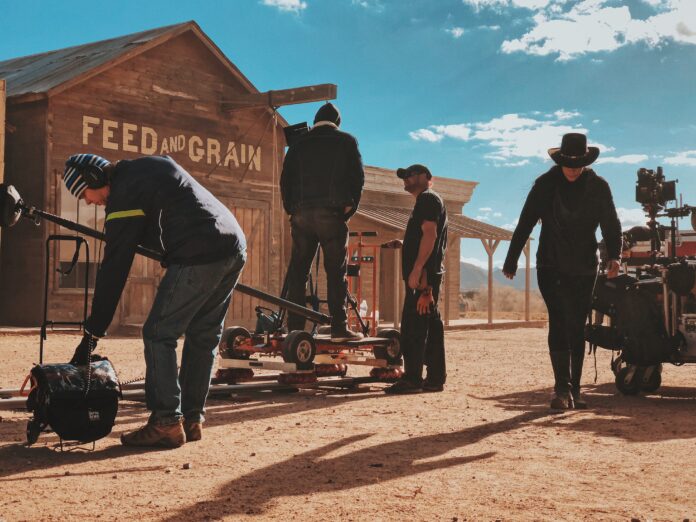On Oct. 21, an incident occurred on the set of the new movie, “Rust,” that led to the injury of Director Joel Souza and the death of Cinematographer Halyna Hutchins. The gun used on set was unknowingly loaded with live rounds and fired by Alec Baldwin after being assured that it was safe.
UNLV film student Aidan Snyder said, “It is an awful situation because it was an easily avoidable tragedy. Hopefully, this will cause firearm safety precautions on movie sets and anywhere else to be ramped up so something like that never happens again.”
This is not the first time this sort of incident has taken place. Infamously, Brandon Lee was killed while filming “The Crow.” Michael Massee fired a gun on set that had a bullet lodged in the barrel and fatally wounded Lee.
These incidents raise the question as to whether or not real firearms should be used on set over other alternatives. There are very few alternatives that can replace real guns and the ones that do exist allow for accuracy issues. Also, if a gun does kill someone on set, then the issue lies with the studio rather than the act of using the firearm.
The term prop gun should be clarified here. Prop guns do not just refer to plastic or rubber guns that are used as part of a costume, but instead, refer to real guns that fire blank cartridges. When an actor fires a gun on screen, it is usually a real gun with blanks.
Real guns are used to achieve realistic gunfire without the use of digital effects. While seemingly dangerous, this is still the best method to achieve realistic on-screen gunfire. Multiple precautions are taken when using this method, such as plexiglass shielding and hearing protection for everyone on set.
To avoid danger altogether, movies can also use fake gun replicas or blowback guns in place of real firearms. However, while fake gun replicas are the safest alternative, actors cannot replicate the kickback and recoil of a real firearm. Blowback guns can remedy those issues, but they can’t replicate the muzzle flash and sound of a real firearm.
So why can’t we just use digital effects to replicate gunfire on blowback guns? While that can achieve the illusion of real gunfire, it comes with its own problems of accuracy. Oftentimes, the wrong type of flash is applied to guns or the sound of the gunshot is of a completely different gun than what is being used on screen.
But the problem goes deeper than the use of real guns, as reports have released that the producers of the movie ignored safety protocols, such as gun inspections, multiple times. The set already had three accidental discharges, yet no action was taken to prevent further incidents. Filming proceeded, and this is on top of the existing issues since crew and actors must deal with unfair and dangerous work conditions, like long hours, commutes and delayed payments.
Non-union workers were brought in to replace camera crew members, and while that does not directly affect the incident itself, it does show how little care was put into the production of the movie. In these kinds of working conditions, live firearms should be nowhere near this movie set, or any other set, since the issue largely stems from production companies’ negligence.
While there are clear dangers to having a live firearm on set, injuries and deaths have been avoided for so long by taking precautions and not cutting corners on safety. We can’t solely blame firearms when studios are negligent and irresponsible with the health and safety of their crew.

